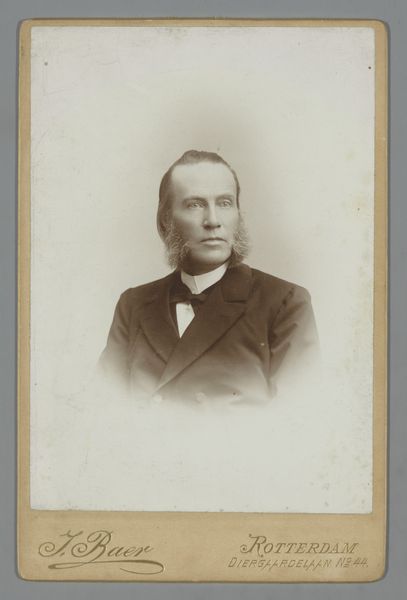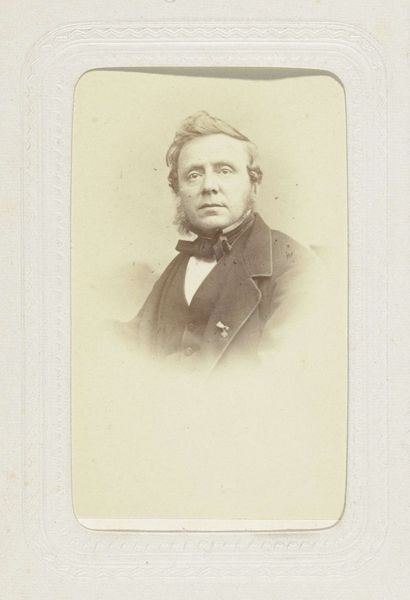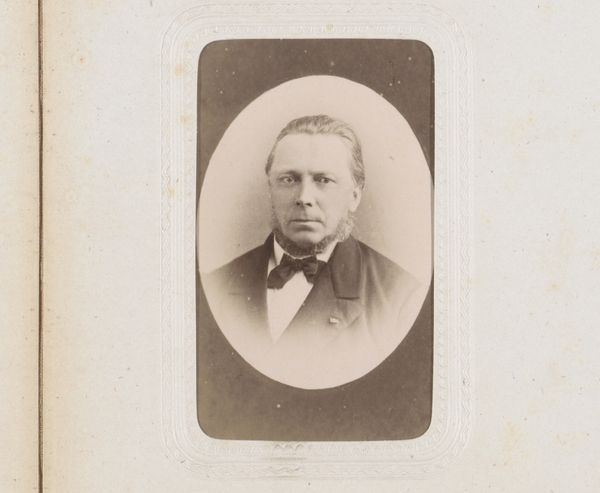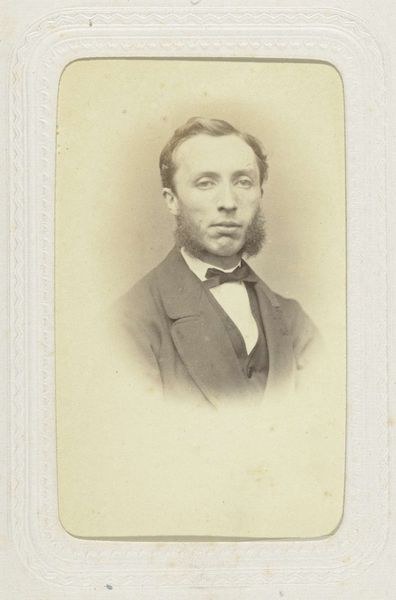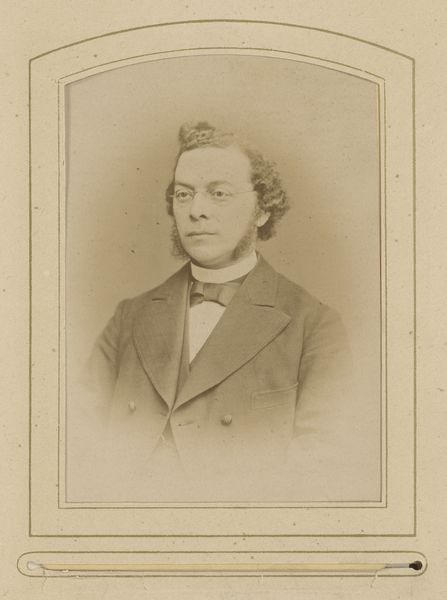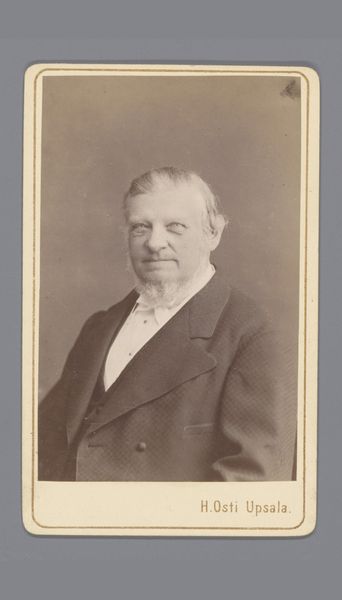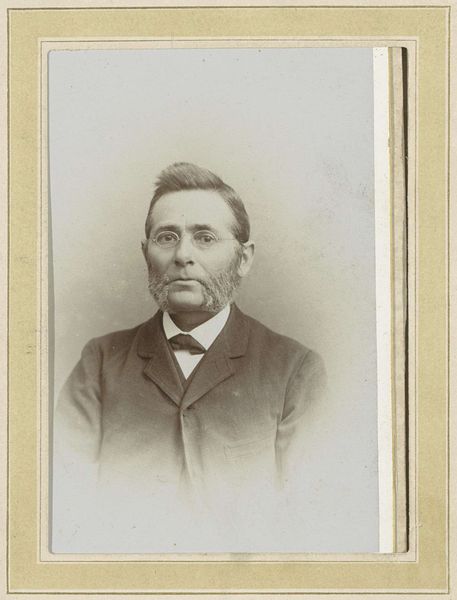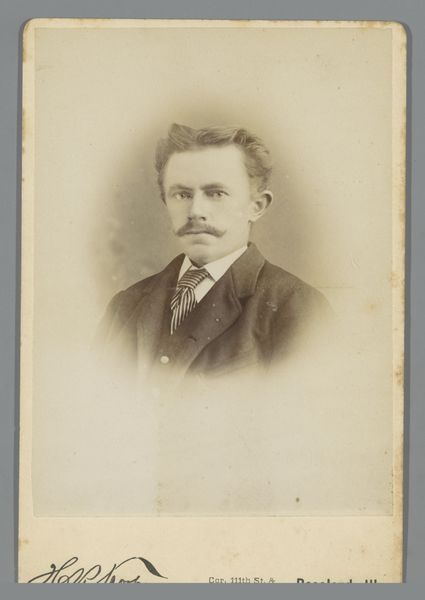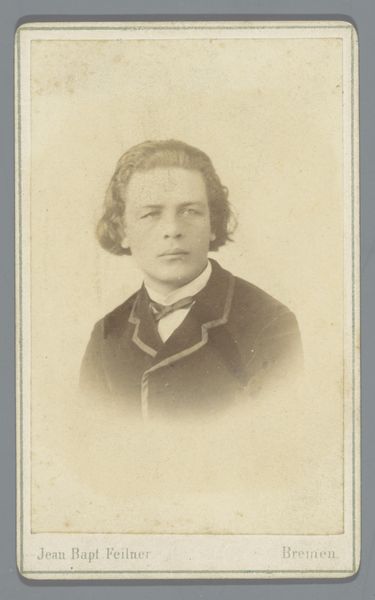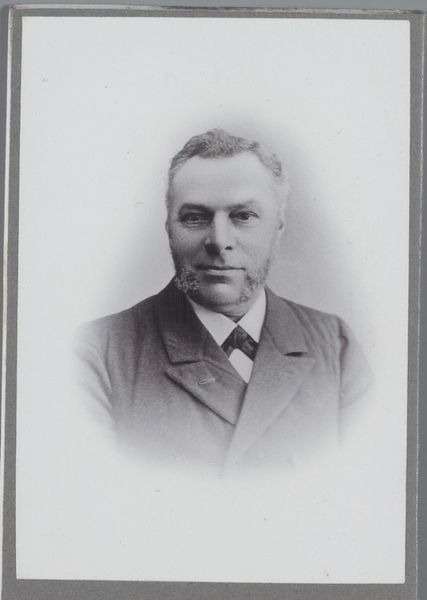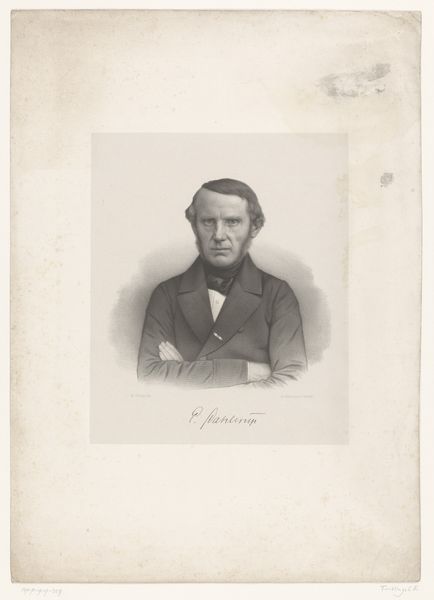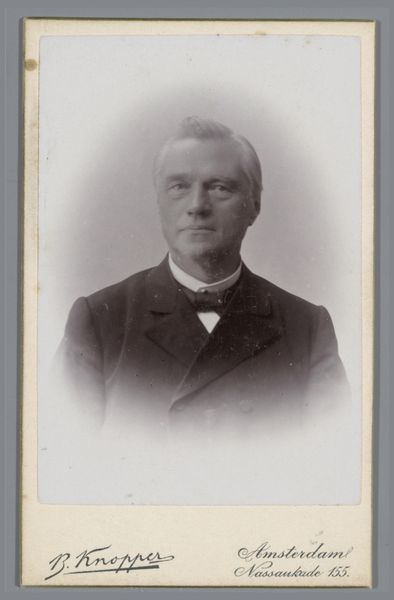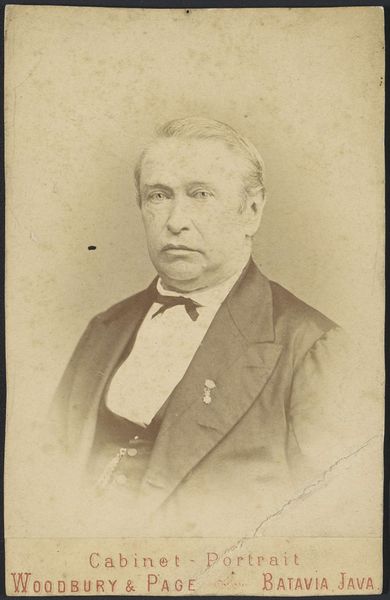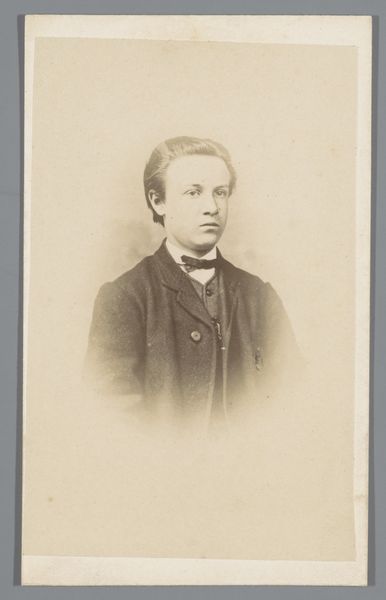
photography, gelatin-silver-print
#
portrait
#
photography
#
gelatin-silver-print
#
realism
Dimensions: length 105 mm, width 64 mm
Copyright: Rijks Museum: Open Domain
Curator: Before us, we have Machiel Hendricus Ladde’s photographic portrait, titled "Portret van Jan Ton," made between 1892 and 1906. The Rijksmuseum holds this gelatin-silver print. Editor: The fading sepia tones create a real sense of age. But it's more than that—there’s a stoicism etched into his face, mirrored by the formal composition, isn’t there? Very classical and composed. Curator: Absolutely. And if we look at the manipulation of light and shadow, we see how it serves to flatten the planes of the figure, distilling Jan Ton into an arrangement of geometric forms and tonality. Notice, in particular, the formal contrast of his jacket against his bright, pressed shirt. It allows one to engage with the very idea of “portrait,” as it strips away the potential trappings of personality or expression. Editor: But I wonder about the labor. Look at the gelatin-silver process. Think about the layers of people, skill, and effort that it took to produce even a simple portrait. We often focus on the final "art" object, and forget the human capital embedded within it. Even something this seemingly austere represents collaboration and technique from multiple hands involved in production and its materials. Curator: That’s an interesting perspective. However, focusing too heavily on that socio-economic aspect could diminish our consideration of its aesthetic qualities. Surely, the composition is carefully orchestrated to meet a certain classical sensibility? Editor: Maybe. Or maybe it was a factory churn out of images! Early photographic studios streamlined portrait production—less "art," more production and social expectation for family records of one's existence. We’re projecting our contemporary values onto something created in a radically different economy. Curator: Regardless, I still contend that "Portret van Jan Ton" transcends its time, posing questions regarding form and representation. Editor: And I will still contend the importance of materiality and labor that led to this final artwork and moment. The human element is key.
Comments
No comments
Be the first to comment and join the conversation on the ultimate creative platform.
